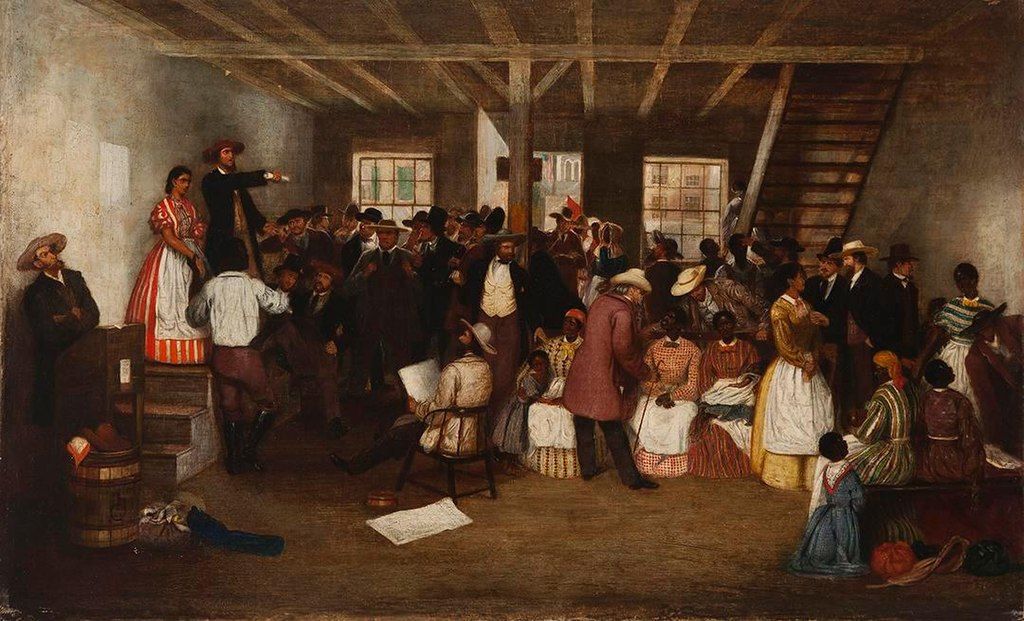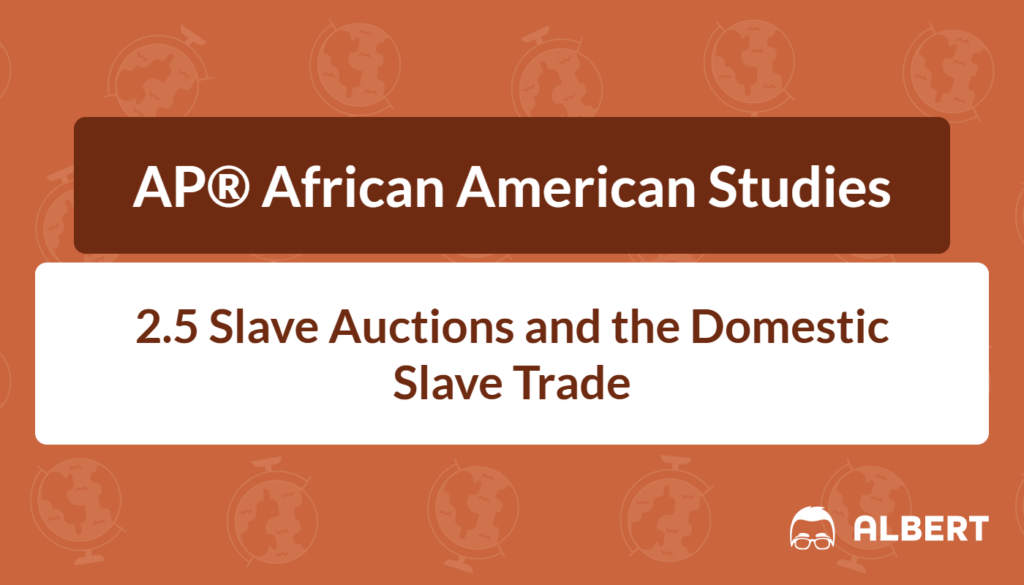What We Review
Understanding Slave Auctions and the Domestic Slave Trade
Introduction
Studying the slave auction and the domestic slave trade is a key step toward understanding African American history. These events shaped the lives of millions of enslaved people. They also fueled the rapid growth of the cotton industry in the southern United States. By learning about how slave auctions operated, students gain deeper insight into the harsh realities of oppression during the 19th century.
However, it is not just about learning facts and dates. It is also about understanding the emotional weight carried by those who experienced these auctions. This knowledge offers a more complete view of both African American history and the nation’s past. The following sections explore what slave auctions were, why they happened, and how they impacted individuals, families, and society at large.
The Nature of Slave Auctions in the 19th Century
Definition and Purpose of Slave Auctions
During the 19th century, organizers held slave auctions where buyers purchased and sold enslaved individuals like property. These public or private gatherings occurred in cities and towns across the South. Because plantation owners viewed enslaved people as valuable laborers, they used these auctions to meet the high demand for workers.
- Enslavers viewed people as commodities.
- Auctions allowed traders to transfer ownership from one enslaver to another.
- The primary goal was profit: those who could pay the highest bid became the new owners.
These auctions were part of the domestic slave trade, which continued to grow even after the Transatlantic Slave Trade officially ended in the United States in 1808. When did the slave trade end in the US? It legally ended with the ban on transatlantic slave imports in 1808, but domestic trading still thrived well into the Civil War era.
The Experience at Auctions
At slave auctions, individuals faced overwhelming fear and uncertainty. Enslavers often forced them onto platforms where buyers scrutinized their bodies for perceived “strength” and “value.”These examinations not only dehumanized but also deeply invaded the personal dignity of enslaved people—enslavers often forced them to stand partially clothed before onlookers, stripping them of privacy and dignity.
The trauma extended beyond the physical. Families stood together, uncertain if they would be sold as a unit or separated forever. Children clung to their parents, and partners held hands, silently hoping to stay together. The emotional anguish of these moments reflects the brutal reality of chattel slavery, in which human lives were commodified, and bonds of kinship were routinely disregarded.

Use of Violence and Psychological Control
Enslavers used violence and psychological intimidation to assert control and suppress resistance. As outlined in Learning Objective (LO) 2.5.A and Essential Knowledge (EK) 2.5.A.1, any act of defiance at a slave auction could provoke immediate and brutal consequences. Whippings were often carried out publicly—even in front of loved ones—to send a clear message: resistance would not be tolerated.
Forms of Control:
- Physical punishment: Enslaved individuals were subjected to whippings, beatings, and other violent punishments designed to inflict pain and instill fear.
- Psychological intimidation: Tactics included threatening to sell family members, enforcing public humiliation, and maintaining constant surveillance—all meant to fracture community bonds and break spirits.
Purpose: These practices were not random acts of cruelty. They were systematic tools of oppression, aimed at maintaining power by fostering an environment of fear, instability, and forced compliance.
The Role of African American Authors in the Abolition Movement
Literary Responses to Slave Auctions
African American authors played a critical role in exposing the truth about slave auctions. LO 2.5.B and EK 2.5.B.1 emphasize that writers used autobiographies, narratives, and poetry to share their personal accounts of being sold at auction or witnessing relatives and friends experience that fate. These firsthand stories allowed readers to see the reality of this brutal institution.
For instance, authors often described the fear, heartbreak, and hopelessness felt during auctions. By detailing the physical pain and emotional trauma, they motivated readers—especially those in the North or abroad—to support the abolition of slavery.
Countering Misconceptions of Slavery
Many enslavers claimed that slavery was a gentle system that provided housing and “care” for enslaved people. Yet African American writers worked to refute such claims. EK 2.5.B.2 explains how authors challenged these myths by highlighting the violence, family separations, and constant threats faced by those in bondage.
- Showing real suffering: Writers exposed the lies that slavery was harmless.
- Influencing public opinion: Their works convinced many to join the fight for abolition by revealing the horrors of being sold like cargo.
- Motivating political action: The powerful stories contributed to growing support for ending slavery.
The Impact of the Cotton Industry on Families
The Growth of the Cotton Industry
The cotton boom in the early 1800s led to a massive need for labor in the lower South. Planters in states such as South Carolina, Georgia, Florida, Alabama, Mississippi, Louisiana, and Texas relied on enslaved people to plant, harvest, and process cotton. EK 2.5.C.2 explains how enslavers viewed enslaved individuals as extremely valuable due to rising cotton production.
Nevertheless, since the Transatlantic Slave Trade had been outlawed in 1808, plantation owners needed to find other ways to acquire laborers. As a result, they turned to the domestic slave trade. Enslaved children became the next generation of forced labor. This internal market allowed planters to buy workers from upper Southern states, increasing forced migration within the country.
Effects on Enslaved Families
The domestic slave trade tore families apart. According to EK 2.5.C.3, people were forced to leave states like Virginia, Tennessee, and Kentucky to move hundreds of miles away. During these moves, enslavers routinely separated families if they sold different members to different plantations.
Picture a family of five. A mother might be shipped to Mississippi while her husband and children were sent to Louisiana. Husbands might never see wives again, and children might grow up without parents. This destruction of family units caused lifelong trauma and disrupted the continuity of African American cultural traditions.
The Second Middle Passage
Historians refer to this forced migration of over one million African Americans during the 19th century as the “Second Middle Passage.” They compare it to the original Middle Passage that brought enslaved Africans across the Atlantic. However, this time, the journey took place over land or along rivers within the United States. EK 2.5.C.4 highlights how the Second Middle Passage displaced more than two-and-a-half times the number of people compared to the original transatlantic crossings.
This massive relocation played a key role in shaping African American communities in the Deep South. It also reinforced the importance of kin networks and cultural resilience. Although families were torn apart, people worked tirelessly to maintain ties through letters, secret meetings, and spiritual bonds.
Summary of Key Concepts
- Enslavers held formal slave auctions to sell enslaved people as property. This process aimed to meet the need for labor in a growing agricultural economy.
- Violence and psychological pressure were used to keep enslaved people under control and discourage resistance.
- African American authors exposed the harsh realities of slave auctions and dismantled claims that slavery was “benign.” Their narratives fueled the abolition movement.
- The cotton boom in the lower South led to a surge in demand for enslaved labor, causing a large-scale domestic slave trade.
- Enslavers forced over one million African Americans to migrate during the Second Middle Passage, making it the largest forced relocation in American history.
Understanding these facts helps students appreciate the immense struggles of enslaved people. It also reveals how economic and social forces shaped the history of the United States.
Quick Reference Chart
Below is a quick reference table with important terms and concepts discussed above:
| Term/Concept | Definition or Key Feature |
| Slave Auctions | Organized events where enslaved people were bought and sold like property. |
| Domestic Slave Trade | The internal trade of enslaved people within the United States after 1808. |
| Second Middle Passage | Forced migration of over one million African Americans to the lower South in the 1800s. |
| Cotton Boom | Rapid growth in cotton production in the early 19th century, increasing demand for labor. |
| 1808 | The year the U.S. government formally banned the Transatlantic Slave Trade. |
Conclusion
These events might seem distant, yet they continue to shape present-day discussions about race, equality, and justice. By recognizing how enslaved people were bought, sold, and uprooted from their homes, today’s students can better understand the historical foundations of racial inequalities. Efforts by African American authors to illuminate the cruelty of slavery made a major difference in changing public opinion.
Though the system of slavery was ultimately abolished, its legacies persist in many forms. Questions about family separation, oppression, and human rights remain highly relevant. Therefore, students are encouraged to explore this topic further to gain a fuller picture of American history and its lasting impact on African American communities.
Sources
This firsthand account by Solomon Northup provides a vivid description of slave auctions and the domestic trade. Northup, an African American man born free, was kidnapped and sold into slavery. His narrative helps fulfill LO 2.5.A and LO 2.5.B by illustrating the harsh realities of being auctioned and showing how personal testimony can support abolition and equality. His experiences demonstrate the brutal methods enslavers used to secure labor for the growing cotton industry, connecting directly to LO 2.5.C and the concept of the Second Middle Passage.
Sharpen Your Skills for AP® African American Studies
Are you preparing for the AP® African American Studies test? We’ve got you covered! Try our review articles designed to help you confidently tackle real-world AP® African American Studies problems. You’ll find everything you need to succeed, from quick tips to detailed strategies. Start exploring now!
Need help preparing for your AP® African American Studies exam?
Albert has hundreds of AP® African American Studies practice questions, free response, and full-length practice tests to try out.









